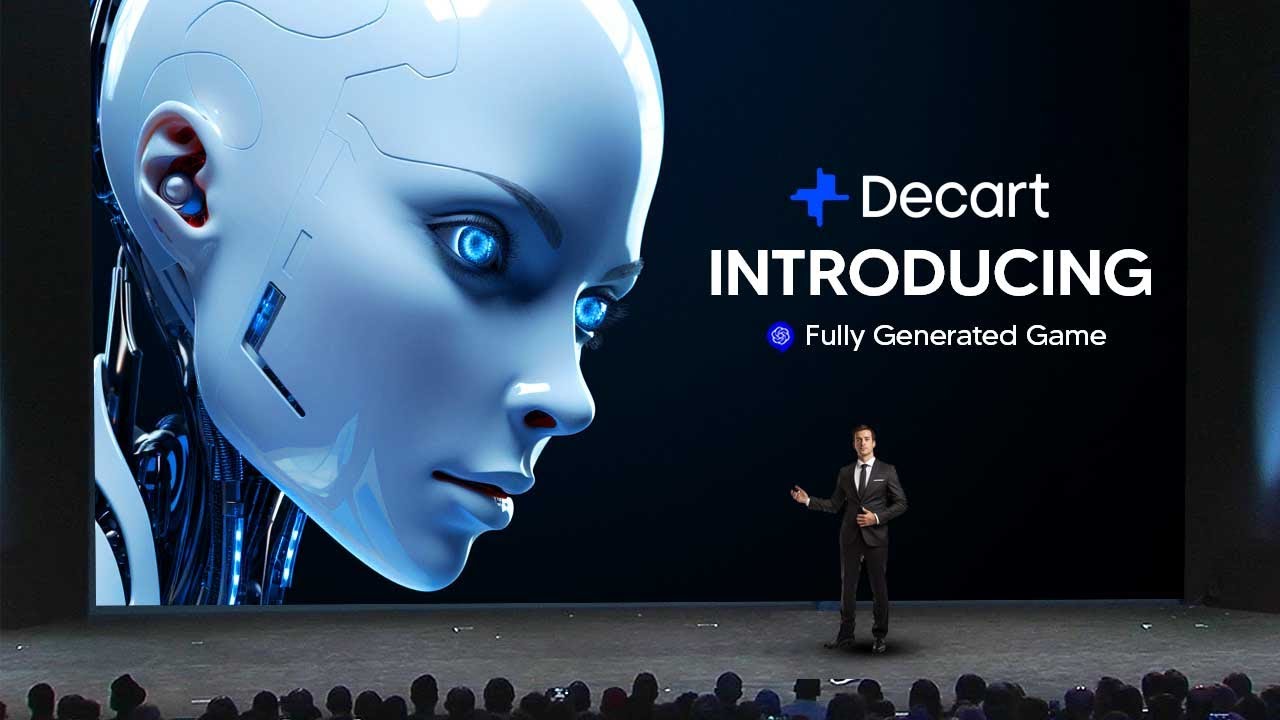The video introduces Oasis, the world’s first fully AI-generated game that creates a dynamic Minecraft-like environment in real-time, utilizing advanced AI models to generate graphics and interactions based on player commands. Developed by Decart AI and Etched AI, Oasis showcases groundbreaking technology that combines diffusion models and Transformers, although it currently faces challenges like low frame rates and resolution due to the demands of real-time generation.
The video introduces Oasis, the world’s first fully AI-generated game, which operates in real-time within a Minecraft-like environment. Unlike traditional games, every frame and interaction is generated by AI as players input commands through their keyboard and mouse. This groundbreaking technology utilizes Transformer models to create an interactive experience where the game environment, physics, and graphics respond dynamically to player actions. The AI model behind Oasis has learned from observing gameplay, allowing it to generate a seamless and immersive experience.
Oasis is developed by two companies: Decart AI and Etched AI. Decart AI focuses on enhancing the efficiency of training and inference for generative models, having raised $21 million in funding. Their goal is to make advanced AI capabilities accessible for real-time applications. Etched AI, founded by Harvard dropouts, aims to challenge Nvidia in the AI hardware space with their specialized SOO chip, designed specifically for Transformer models. This chip promises to significantly outperform general-purpose GPUs, making it ideal for running complex AI applications like Oasis.
The technology behind Oasis combines diffusion models and Transformers to generate game content in real-time. Diffusion models work by gradually refining a noisy image into a clear one, which is applied to create smooth video frames for gameplay. Transformers, on the other hand, remember past actions and current inputs to generate contextually relevant frames. To manage the substantial computing power required, Oasis employs a compression method called VIT VAE, allowing the AI to focus on essential data while generating each frame quickly.
The video showcases gameplay from Oasis, highlighting its unique mechanics, such as the ability to teleport between biomes by looking down and then back up. However, the gameplay experience is not without limitations; the frame rate is relatively slow, and the resolution is low due to the demands of real-time generation. The AI’s performance is also influenced by the quality of the training data, which can lead to inconsistencies in game mechanics, such as the behavior of blocks in the environment.
In comparison to previous attempts at AI-generated games, such as Google’s GameGen with Doom, Oasis represents a significant advancement in real-time interactive gaming. While the technology is still in its early stages and faces challenges, such as the need for improved memory and data quality, it opens up exciting possibilities for the future of gaming. The video concludes by emphasizing that this is just the beginning of what AI-generated games can achieve, hinting at a future where such technology becomes more refined and widely accessible.
